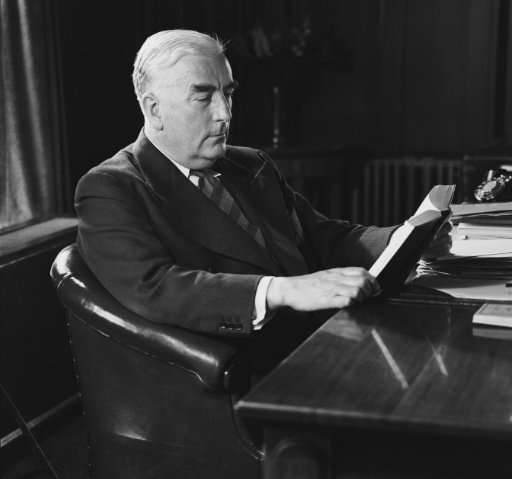On this day, 28 October 1940, Menzies reaches across the partisan divide to create an Advisory War Council that includes the Prime Minister, the Leader of the Opposition, three members of the War Cabinet, and three additional members of the Opposition. The intention is that all three major parties will take an active role in directing the war effort, which is particularly important since as of the 1940 election the Government narrowly holds power with the support of two independents. In these circumstances, the Council offers a degree of political stability and also continuity should the Government fall, which it did in October 1941.
When war had broken out in September of 1939, Menzies created a War Cabinet made up of the Senior Ministers whose responsibilities most directly related to the war effort. Included initially were Defence Minister Geoffrey Street, Supply Minister Richard Casey, Information Minister Henry Gullett, and Attorney General Billy Hughes. Originally a standing committee of the full Cabinet, as the war progressed the War Cabinet came to largely supersede the original. Major decisions on the conduct of the war were made by the War Cabinet, with the full Cabinet dealing with everything else. Meetings were generally held at Victoria Barracks, nearby the memorial Shrine in Melbourne, and also at Parliament House.
The War Cabinet was dealt a devasting blow in August 1940 when three of its members were killed in the Canberra Air Disaster. The next month a weakened Government faced the electors and failed to secure a majority in their own right. In response, Menzies approached Opposition Leader John Curtin with the offer of forming a cross-party national government as had occurred in the United Kingdom. Curtin refused, claiming that while he would co-operate fully in the war effort, Labor had other social objectives that it wanted a free hand to pursue.
The Advisory War Council was proposed and accepted as an alternative, though Menzies was disappointed in this result. He felt that the Opposition was being given increased power and access to classified information, but taking no responsibility for the decisions that were made and leaving themselves free to continue to snipe at the Government.
The Advisory War Council did some valuable work and came to exercise considerable power, but Menzies’s fears proved well grounded. Labor did not abandon politicking as there was political wrangling over the budget and in August 1941 Menzies was blocked from returning to England to press Australia’s concerns about the danger posed by Japan (who would ultimately enter the war in December). This stalemate prompted Menzies to again invite Curtin to form a national government, this time with Curtin as Prime Minister. Curtin replied that it was not a decision he could make himself, and took it to the Labor party-room, which once again rejected the overture. The result was Menzies’s resignation as Prime Minister.
When Curtin became Prime Minister in October 1941, he kept the Advisory War Council arrangement and strengthened it by formally agreeing that the Council’s decisions be automatically adopted by the War Cabinet if they were supported by the Government’s Ministers (which was arguably an acknowledgement of the power it already wielded). This arrangement gave the Opposition a slightly greater input on the direction of the war effort, but after Labor won an election landslide in August 1943 the Council was maintained largely as a courtesy.
Further Reading:
A.W. Martin, Robert Menzies, A Life: Volume 1 1894-1943 (Melbourne University Press, 1993).
Anne Henderson, Menzies at War (NewSouth Publishing, 2014).
Sign up to our newsletter
Sign up for our monthly newsletter to hear the latest news and receive information about upcoming events.


